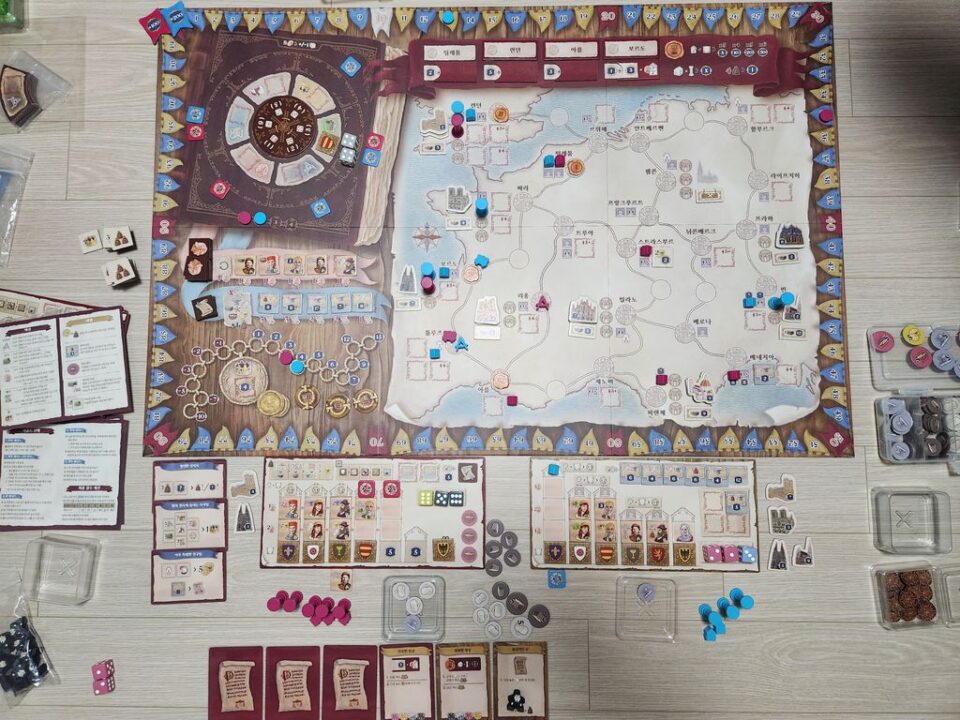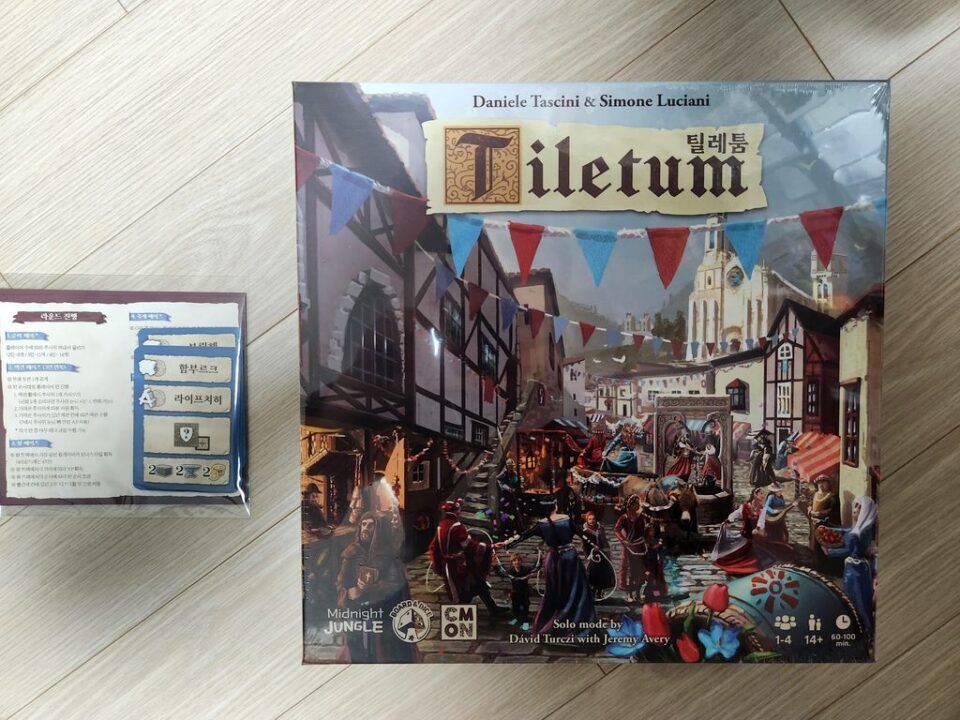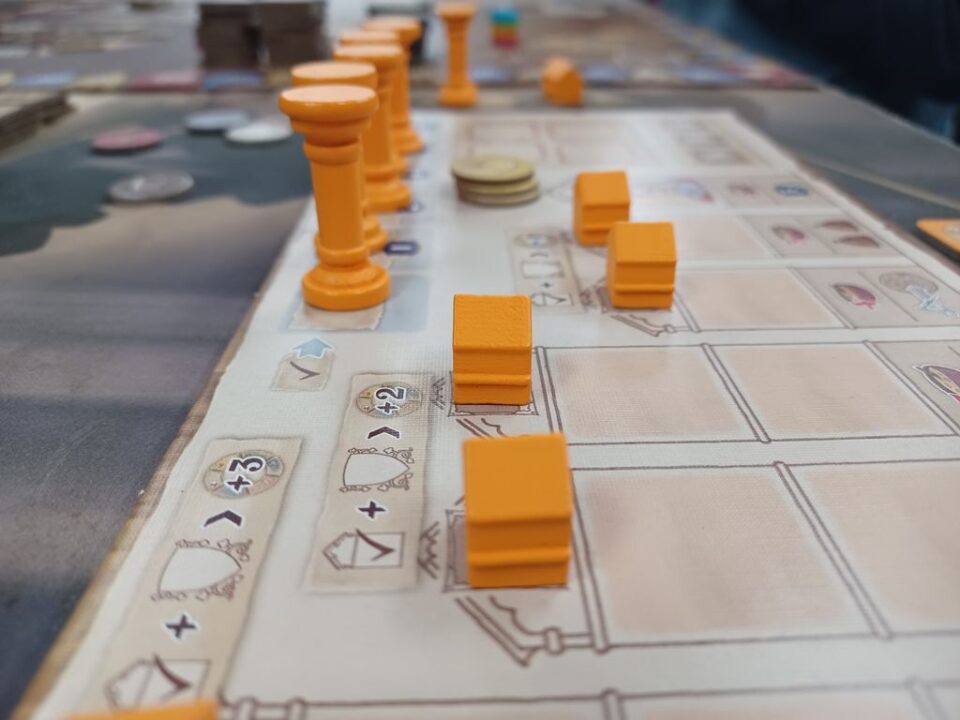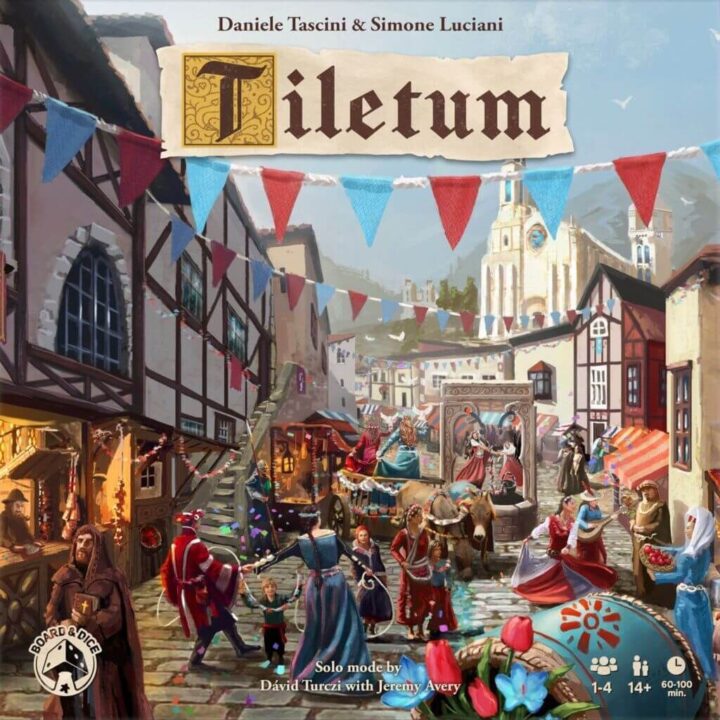Overview
Welcome to the world of ‘Tiletum‘, where strategic mastery meets lively social interaction and swift pacing. Get yourself ready for an enchanting journey through this board game that promises a delightful blend of careful planning and dynamic player engagement. As we step into this intricate dance of tiles and timing, we unravel the layers that make ‘Tiletum’ uniquely engrossing. Buckle up as we navigate through the bustling streets of this game, picking apart the elaborate mechanisms, the keen adventure of human alliances, and the rhythm of a well-tuned gaming experience in our Tiletum Review.
How It Plays
Setting Up
Tiletum welcomes players into an era of historical trade and booming economy. To set up, each player receives a player board, starting money, workers, and a few base level resources. The central board is populated with tiles representing resources, buildings, and nobles, all ready for the picking – aligning closely to strategic necessities that vary each session.
Gameplay
Each turn, players place their workers tactically on the central board to acquire tiles that provide resources and possibilities for powerful combos. It’s a keen dance between expanding one’s own territory and hindering opponents’ plans. Mid-game modifications and the pull of initiatives jostle for attention, illustrating a rich tapestry of tactical opportunity and interactions.
Winning the Game
The path to victory wends through resourceful management and strategic acumen. As seasons turn amidst Tiletum’s idyllic landscapes, players invest in buildings, court nobles, and procure bountiful assets. The strategy solidifies as players beckon fate for the fabled ‘end game scoring,’ where the most drawable empire yields its crown to the canniest architect of wealth and influence. After a predetermined number of rounds, scores are tallied, legacies established, and winners decreed.
Want to know more? Read our extensive strategy guide for Tiletum.
Mastering the Art of Strategy in Tiletum
In my time delving into the vibrant world of Tiletum, the strategic depth of each move is something that consistently draws me in. The mechanics centered around Strategy transform Tiletum from a casual play into a cerebral battle of wits.
Strategic Foundations
First and foremost, the worker placement system is fundamental to Tiletum’s gameplay. Recounting from my play sessions, choosing when to allocate your workers for maximum benefit involves forecasting opponents’ moves—a true test of foresight. Will you focus on production, or race up the clergy track? Each choice feeds into a broader strategy delicately balancing risk and reward.
Subtle Complexity
Moreover, subtle layers become apparent as I reflect on past games. Tiletum ensnared my gaming group with its sleeves of strategy: allocating workers judiciously is just the surface. Cultivating resources at just the right tempo, and springing combos that leave your fellow players envious—all within Tiletum’s intricate tapestry. It’s chess-like in its requirement to plan multiple plays ahead.
As our strategies unfold, the tango of negotiation and alliances beckons, steering our Tiletum Review into equally fascinating social dynamics next.

The Heart of the Game: Social Twists in Tiletum
There’s something about sitting down to play Tiletum that immediately lowers the barriers between players, naturally fostering alliances and trade-offs. Perhaps that’s because, in my own experiences, the game pushes you gently towards diplomacy. The Gentle Art of Bartering My first session of Tiletum cemented my admiration for its dynamic interaction. Half-way through, I found myself both needing tiles that another player had claimed and sitting on resources overly abundant in my stores. It led to an impromptu alliance; an us-against-the-game-board pact which involved trading turns to maximize our strategies. These interactions spill subtly but significantly across the whole game.
Unexpected Friendships
The landscape of allies in Tiletum can shift like tides — whispering promises made under a strategy’s breath only to be broken when victory points flashed their persuasive power. In my most memorable play-through, two of us formed what seemed like an unbreakable bond, until the lure of victory sewed seeds of distrust. This organic ebb and flow of allegiances keeps each game session distinct and eternally unpredictable.
Partners today, competitors tomorrow, this social centrepiece undeniably throttles Tiletum’s replayability into the upper echelons. Drawing our evening to a close, with conversations as rich as the tactics used, one can’t help but imagine that dwelling on game length and pacing might reveal many of the secrets to this board game’s captivating identity.

Mastering Time in Tiletum
Strategic Length
In my Tiletum play sessions, one key aspect that stood out was the thoroughly calculated game length. Initially, the game seems like it would sprawl endlessly across an evening. However, after diving into the strategic depth of Tiletum, I quickly realized that the game’s pacing is a masterclass in design. It feels like a journey, where each decision holds weight and the rise and fall of tension keeps everyone engaged. Quite frankly, the ending always seems to arrive just when the game reaches its peak, an elusive moment that Tiletum catches flawlessly.
Dynamic Pacing
The timeless debate as to whether good pacing makes or breaks a board game is settled here; Tiletum makes it. The ebb and flow of play within an individual session naturally allow for strategic breathing room and a satisfying pace without hastiness. Each phase ticks along meaningfully, drawing players into deeper levels of commitment to their strategies, ramping up the anticipation with every turn. Absolutely, the pacing keeps the table enthralled with every tile placed.
Based on the classic conundrum of wanting ‘just one more turn,’ I wholeheartedly recommend Tiletum to those who thrive on tightly tuned games of strategic crescendos and thoughtful progression.

Conclusion
Bringing our jaunt through the medieval landscape of Tiletum to a close, this review has unpacked the game’s strategic nuance, the lively social (and sometimes diplomatically charged) interactions, and the cohesive pacing that ensures each playthrough is as engaging as it is timely. Whether it’s the thoughtful worker placement that hones your strategic planning, or the alliances and negotiations that test your interpersonal adeptness, Tiletum offers a robust experience tailored for those who revel in tactical depth as well as table talk. Game length and pacing are the cherries on top, providing a satisfying conclusion to the gaming feast without overstaying their welcome. If you’re pondering whether Tiletum earns a place on your game shelf, based on all its merits discussed, it comes heartily recommended for a spot in any board game enthusiast’s collection.


